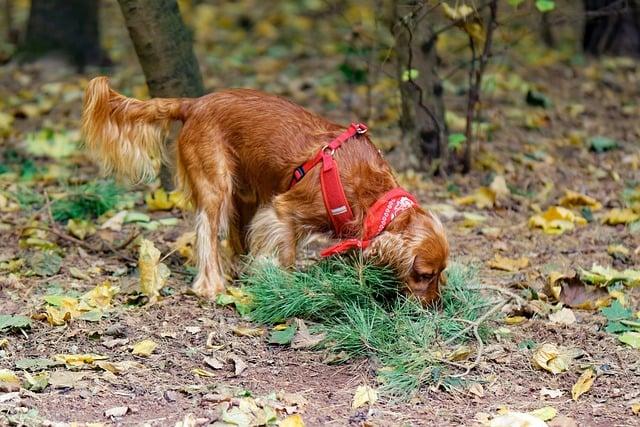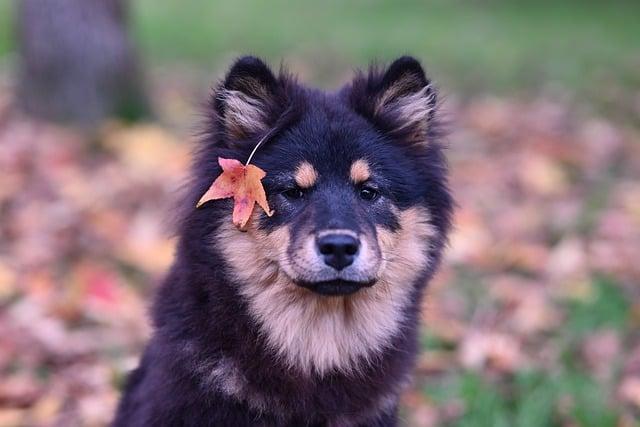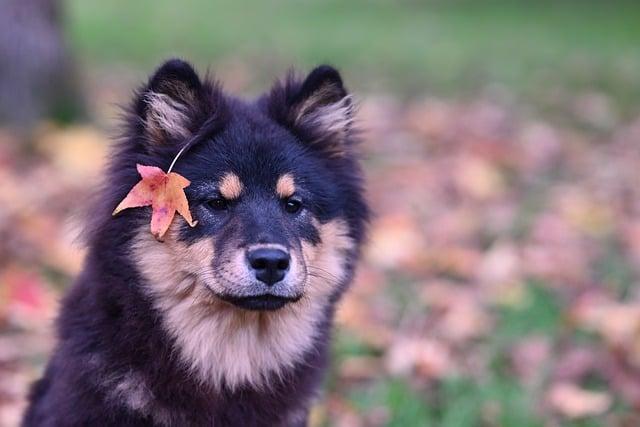In a quiet neighborhood, a woman named Sarah felt uneasy walking home alone at night. One evening, she adopted a spirited German Shepherd named Max. As they strolled together, Max’s keen instincts kicked in when a stranger approached too closely. With a low growl and a protective stance, he stood between Sarah and the potential threat. That night, Sarah realized that a loyal dog like Max doesn’t just offer companionship; he embodies a guardian spirit. Choose a dog that will protect you—because safety is priceless.
Contents
- Choosing the Right Breed for Personal Protection
- Understanding the Temperament of Protective Dog Breeds
- Training Techniques to Enhance Your Dogs Protective Instincts
- Building a Strong Bond for Effective Protection and Loyalty
- Q&A
Choosing the Right Breed for Personal Protection
When it comes to selecting a canine companion for personal protection, several factors must be considered to ensure that the breed aligns with your lifestyle and security needs. Certain breeds are naturally predisposed to protective instincts, making them ideal candidates for guarding their owners. **German Shepherds**, **Rottweilers**, and **Doberman Pinschers** are often at the top of the list due to their intelligence, loyalty, and trainability. These breeds not only possess the physical strength necessary for protection but also the mental acuity to assess situations and respond appropriately.
In addition to breed characteristics, the dog’s temperament plays a crucial role in its effectiveness as a protector. Look for breeds that exhibit **confidence**, **courage**, and a strong **bonding instinct** with their family. Breeds like the **Belgian Malinois** and **Boxer** are known for their protective nature while also being affectionate and playful with their owners. It’s essential to choose a breed that can balance its protective instincts with a friendly demeanor, ensuring that it can distinguish between a genuine threat and a harmless visitor.
Training is another critical aspect of ensuring your dog can fulfill its protective role. Regardless of the breed you choose, early socialization and obedience training are vital. A well-trained dog will not only respond to commands but will also learn to recognize potential threats. Consider breeds that are eager to please and quick learners, such as **Labrador Retrievers** or **Giant Schnauzers**. These breeds thrive in structured training environments and can be taught to protect while remaining calm and composed in everyday situations.
Lastly, consider your living environment and lifestyle when selecting a breed for personal protection. Some breeds require more space and exercise than others, which can impact their ability to thrive in your home. For instance, **Bullmastiffs** may be better suited for larger homes with yards, while **Chihuahuas** can provide a sense of security in smaller spaces. Assess your daily routine, activity level, and the amount of time you can dedicate to training and socialization to ensure that your chosen breed will not only protect you but also fit seamlessly into your life.
Understanding the Temperament of Protective Dog Breeds
When considering a dog for protection, understanding the inherent temperament of various breeds is crucial. Protective dog breeds are often characterized by their loyalty, intelligence, and strong instincts. These traits not only make them excellent guardians but also require responsible ownership and training. A well-balanced protective dog should be confident yet calm, displaying a natural ability to assess situations and respond appropriately.
Many protective breeds exhibit a strong desire to please their owners, which can be harnessed through positive reinforcement training. This approach fosters a bond built on trust and respect, essential for effective protection. Some breeds, such as the **German Shepherd** and **Rottweiler**, are known for their versatility and adaptability, making them suitable for various environments, from family homes to working settings. Their protective instincts can be channeled into specific tasks, such as guarding property or providing personal protection.
It’s important to recognize that not all protective breeds are suitable for every owner. For instance, breeds like the **Doberman Pinscher** and **Bullmastiff** require experienced handlers who can provide firm yet fair guidance. These dogs thrive in structured environments where they can learn boundaries and expectations. Additionally, socialization plays a vital role in developing a well-rounded temperament, allowing these dogs to distinguish between normal situations and potential threats.
Ultimately, the temperament of protective breeds is shaped by a combination of genetics, training, and socialization. Owners must commit to ongoing education and engagement with their dogs to ensure they remain balanced and well-adjusted. By understanding the unique characteristics of these breeds, prospective owners can make informed decisions, ensuring they choose a dog that not only protects but also integrates seamlessly into their family life.
Training Techniques to Enhance Your Dogs Protective Instincts
To cultivate your dog’s protective instincts, it is essential to engage in consistent and purposeful training techniques. Start by establishing a strong bond with your dog, as trust is the foundation of any effective training regimen. Incorporate positive reinforcement methods, rewarding your dog with treats, praise, or playtime whenever they exhibit protective behaviors. This encourages them to associate guarding actions with positive outcomes, reinforcing their instinct to protect you.
Socialization plays a crucial role in developing a well-rounded protector. Expose your dog to various environments, people, and other animals to help them distinguish between normal situations and potential threats. This exposure will enable your dog to assess situations more accurately, ensuring they respond appropriately when it matters most. Consider enrolling your dog in group classes or organized playdates to enhance their social skills while reinforcing their protective instincts.
Incorporating obedience training is vital for enhancing your dog’s protective capabilities. Teach commands such as **”stay,” “come,”** and **”leave it,”** which can be invaluable in high-stress situations. A well-trained dog will be more likely to respond to your commands, allowing you to maintain control during potential threats. Regular practice of these commands in various settings will help solidify their understanding and responsiveness, making them more reliable protectors.
Lastly, simulate real-life scenarios to prepare your dog for potential threats. Use controlled exercises to mimic situations where your dog may need to protect you, such as a stranger approaching or an unexpected noise. Gradually increase the intensity of these scenarios, ensuring your dog remains calm and focused. This type of training not only sharpens their instincts but also builds their confidence, making them more effective guardians when the need arises.
Building a Strong Bond for Effective Protection and Loyalty
When it comes to choosing a canine companion that will not only offer protection but also exhibit unwavering loyalty, the foundation lies in the bond you build with your dog. This relationship is cultivated through consistent training, socialization, and quality time spent together. A dog that feels secure and loved is more likely to respond to your commands and instincts, making it a reliable guardian. The emotional connection you foster will empower your dog to instinctively protect you and your home.
**Training is essential** in developing a protective dog. Engaging in obedience training helps establish you as the leader, while also teaching your dog to respond to your commands promptly. Consider incorporating the following elements into your training regimen:
- Basic obedience commands (sit, stay, come)
- Socialization with other dogs and people
- Positive reinforcement techniques
- Protection training with a professional trainer
Moreover, **socialization** plays a crucial role in shaping a dog’s behavior. Exposing your dog to various environments, sounds, and situations will help them become well-adjusted and confident. A well-socialized dog is less likely to react fearfully or aggressively in unfamiliar situations, making them more effective protectors. Regular outings, playdates, and interactions with different people will enhance your dog’s ability to discern between a friend and a potential threat.
Lastly, **trust and respect** are cornerstones of a strong bond. Your dog must feel that they can rely on you for guidance and protection. This mutual trust encourages your dog to act instinctively in your defense. Spend time engaging in activities that strengthen your relationship, such as playing fetch, going for walks, or simply relaxing together. The more time you invest in nurturing this bond, the more your dog will be motivated to protect you, ensuring a loyal partnership that thrives on love and respect.
Q&A
-
What breeds are known for their protective instincts?
Several dog breeds are renowned for their protective nature, including:
- German Shepherds – Highly intelligent and versatile, they excel in protection and obedience.
- Rottweilers – Loyal and confident, they are natural guardians of their families.
- Doberman Pinschers – Known for their alertness and loyalty, they are excellent protectors.
- Belgian Malinois – Agile and intelligent, they are often used in police and military roles.
-
How can I train my dog to be protective?
Training your dog to be protective involves:
- Establishing a strong bond through consistent training and socialization.
- Using positive reinforcement techniques to encourage desired behaviors.
- Introducing controlled scenarios where your dog can learn to assess threats.
- Consulting a professional trainer experienced in protection work.
-
Are protective dogs safe around children?
Yes, many protective breeds can be safe around children when properly trained and socialized. It’s crucial to:
- Supervise interactions between dogs and children.
- Teach children how to interact respectfully with dogs.
- Choose a breed known for its gentle temperament with kids.
-
What should I consider before getting a protective dog?
Before bringing a protective dog into your home, consider the following:
- Your lifestyle and activity level, as some breeds require more exercise and engagement.
- The time and resources you can dedicate to training and socialization.
- Understanding the breed’s temperament and needs to ensure a good match for your family.
- Potential insurance implications, as some breeds may affect your homeowner’s policy.
choosing a dog that will protect you goes beyond mere breed. It involves understanding their instincts, training, and temperament. Invest in a loyal companion that not only safeguards your home but also enriches your life with unwavering devotion.




